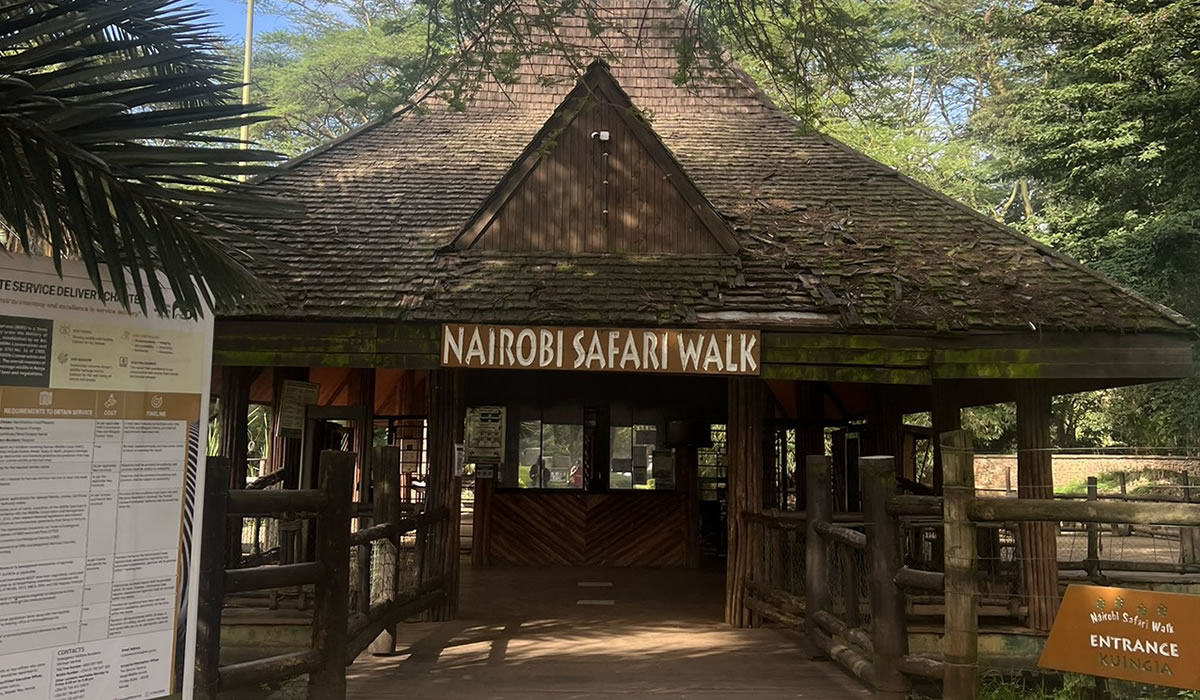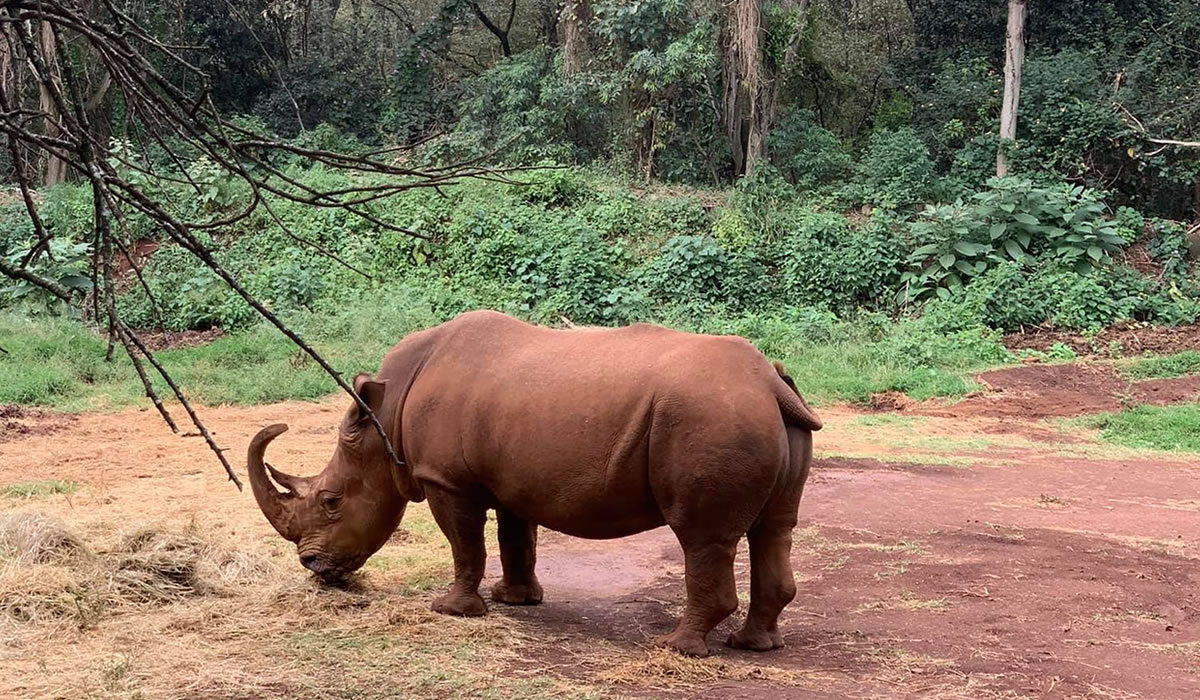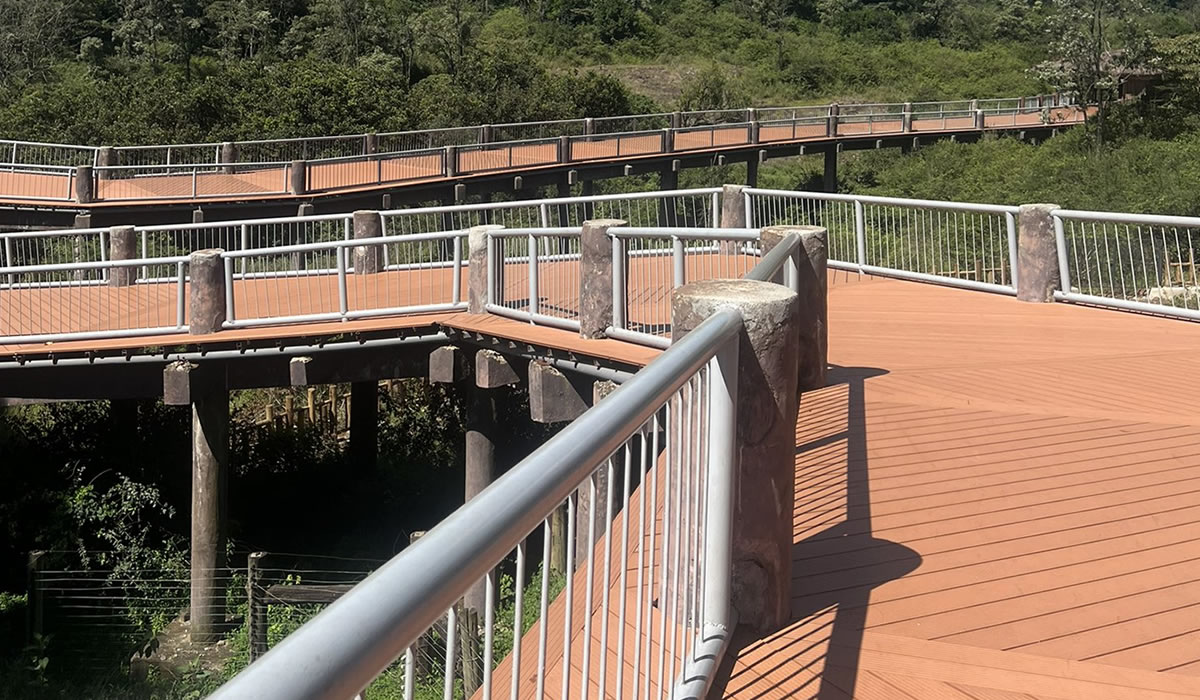Nairobi Safari Walk is a unique and immersive wildlife experience located just outside Kenya’s bustling capital city. Situated within the Nairobi National Park and managed by the Kenya Wildlife Service (KWS), this attraction serves as an educational, conservation, and recreational facility. Combining modern zoo concepts with a natural environment, the Nairobi Safari Walk offers visitors a chance to see Kenya’s rich wildlife up close without venturing deep into the wilderness.
Nairobi Safari Walk is strategically located along Lang’ata Road, approximately 7 kilometers from the city center of Nairobi. It lies adjacent to the Nairobi National Park and shares its entrance with the Kenya Wildlife Service headquarters. Its convenient location makes it one of the most accessible wildlife experiences in Kenya, ideal for tourists with limited time or those who wish to enjoy nature without travelling far from the capital.

What is Nairobi Safari Walk?
Nairobi Safari Walk is a raised wooden boardwalk that meanders through various ecosystems replicated to resemble Kenya’s diverse habitats. The 2.5-kilometer trail takes visitors through wetlands, savannah grasslands, and riverine forests, providing a microcosmic view of Kenya’s ecological zones. Along the way, visitors encounter a variety of wildlife species in open enclosures that simulate natural conditions, allowing for an authentic yet safe viewing experience.
The facility is part zoo, part conservancy, and part educational center, promoting wildlife awareness, conservation values, and eco-tourism. It is especially popular among school groups, families, nature enthusiasts, and international tourists seeking a preview of Kenya’s famed safaris.
Why Visit Nairobi Safari Walk?
Nairobi Safari Walk is more than just a tourist attraction. It is a conservation and educational hub that plays a vital role in spreading awareness about Kenya’s biodiversity. Here are several compelling reasons to include it in your Nairobi itinerary:
- It offers a chance to view a wide variety of Kenyan wildlife species within a short time and in a semi-natural setting.
- It is ideal for travelers who may not have time to visit larger national parks like Maasai Mara or Amboseli.
- It serves as a family-friendly destination with interactive learning for children and adults.
- The facility promotes conservation awareness through guided tours, signage, and educational displays.
Wildlife and Attractions at Nairobi Safari Walk

One of the main highlights of the Nairobi Safari Walk is the opportunity to see over 100 species of native wildlife, including several that are rare or endangered. These animals are housed in spacious, landscaped enclosures that closely resemble their natural habitats.
- Big Cats
Visitors can see majestic predators such as lions, leopards, and cheetahs in a safe and controlled environment. These big cats are often more visible here than in the wild, making the Safari Walk ideal for wildlife photography and up-close observation.
- Herbivores and Grazers
Species like zebras, giraffes, antelopes, and elands roam peacefully in the open sections of the park. The close proximity to these animals provides a thrilling yet safe viewing experience, especially for children and first-time safari goers.
- Rare and Endangered Species
The Safari Walk is also home to species that are rarely seen in the wild, such as the bongo antelope, albino zebras, and pygmy hippos. These unique animals play a crucial role in conservation and education programs conducted by KWS.
- Reptile and Amphibian Section
There is a designated area showcasing Kenya’s reptiles, including crocodiles, tortoises, and various snake species. Educational panels explain their behavior, ecological role, and safety tips for encountering them in the wild.
- Aviary and Bird Watching
Bird lovers can enjoy spotting different species of birds, both in captivity and in the wild, as the park is located in a natural bird migration corridor. Species like crowned cranes, weaver birds, and owls can often be seen here.
Educational and Conservation Role
Nairobi Safari Walk is more than a leisure destination. It is a powerful tool for conservation education. The facility regularly hosts school visits, workshops, and conservation events designed to teach young people about the importance of biodiversity and environmental stewardship.
Interpretive signs, interactive displays, and knowledgeable guides help deepen visitors’ understanding of wildlife and their ecosystems. The Safari Walk also introduces guests to various conservation challenges such as poaching, habitat destruction, and climate change, and the role that protected areas and communities play in protecting wildlife.
Tourist Activities at Nairobi Safari Walk
While the Safari Walk is relatively small in scale, it offers a rich variety of tourist activities for both individuals and groups. Some of the top things to do include:
- Guided Nature Walks
Professional guides are available to lead informative tours, highlighting key species, ecosystems, and conservation messages. These guided walks are ideal for groups and families seeking a more enriching experience.
- Wildlife Photography
The Safari Walk is a photographer’s dream, offering opportunities to take stunning close-up shots of animals in well-lit and natural-looking enclosures. The elevated boardwalk allows for unique angles and perspectives.
- Educational Tours for Students
The park hosts school tours where students learn about Kenya’s biodiversity, wildlife management, and ecological balance. The curriculum is tailored to different age groups, ensuring a meaningful experience for all.
- Bird Watching
With its lush vegetation and location near a national park, the Safari Walk is a hotspot for bird watchers. Bring binoculars and a camera to spot both local and migratory birds.
- Family-Friendly Fun
The boardwalk is easy to navigate, and the facility includes rest areas, picnic spots, and child-friendly zones. It is an excellent place for a weekend family outing.

Best Time to Visit Nairobi Safari Walk
The Nairobi Safari Walk is open year-round and can be visited any day of the week. However, the best time to visit depends on weather and personal preferences.
- Dry Season (June to October, January to March): These months offer pleasant weather with less rainfall, making it ideal for walking tours and photography.
- Wet Season (April to May, November to December): Though the park is still open, some areas may be slippery or muddy. However, this is also when the vegetation is lush and bird activity is high.
Morning hours (8:30 AM to 11:00 AM) are the best time to visit, as animals are more active and the temperature is cooler.
Operating Hours and Entry Fees
- Opening Hours: 8:30 AM to 5:30 PM daily, including weekends and public holidays.
- Entry Fees (subject to change):
- Citizens: Ksh 250 for adults, Ksh 150 for children.
- Residents: Ksh 300 for adults, Ksh 200 for children.
- Non-residents: USD 22 for adults, USD 13 for children.
It is advisable to check the latest rates on the official Kenya Wildlife Service website before your visit.
How to Get to Nairobi Safari Walk
The Safari Walk is easily accessible by both private and public transport.
- By Road: Take Lang’ata Road from Nairobi city center. The drive takes about 20 minutes in light traffic.
- By Public Transport: Matatus (minibuses) to Lang’ata and Karen routes will drop you near the main gate. You can also use ride-hailing apps like Uber and Bolt.
Free parking is available at the entrance for private vehicles.
Facilities and Amenities
- Restrooms: Clean and well-maintained restrooms are available within the park.
- Cafeteria and Snack Shops: Light meals, snacks, and refreshments can be purchased on-site.
- Gift Shop: Visitors can buy souvenirs, educational materials, and locally made crafts.
- Picnic Areas: Designated spots allow families and groups to enjoy meals in a scenic environment.
Tips for Visiting Nairobi Safari Walk
- Wear Comfortable Shoes: The raised boardwalk is easy to walk, but comfortable footwear enhances your experience.
- Carry Water and Sunscreen: Nairobi’s sun can be intense even in cooler months.
- Follow Park Rules: Stay on marked paths, avoid feeding animals, and respect the natural environment.
- Use a Guide for Deeper Insight: While self-guided tours are allowed, a guide provides additional value through knowledge and storytelling.
Nearby Attractions
If you are planning a full day of exploration, consider combining your visit to the Safari Walk with these nearby attractions:
- Nairobi National Park: Offers a full safari experience with chances to see lions, rhinos, and giraffes in the wild.
- David Sheldrick Wildlife Trust: Famous for rescuing and rehabilitating orphaned baby elephants.
- Giraffe Centre: A conservation and breeding center for the endangered Rothschild’s giraffe.
- Bomas of Kenya: A cultural village showcasing traditional Kenyan lifestyles, dance, and music.
Nairobi Safari Walk is a hidden gem within Kenya’s capital that brings the wild close to the city. Whether you are a local resident, a tourist on a short layover, or an educator seeking meaningful experiences for students, this facility offers something valuable for everyone. Its unique blend of wildlife, education, and accessibility makes it a top choice for urban nature tourism in Kenya.
With its close proximity to other major attractions and its commitment to conservation, Nairobi Safari Walk is more than just a boardwalk in the city, it is a bridge between people and the natural world. Make sure to include this enriching destination on your Nairobi travel itinerary for a rewarding and eye-opening experience.

